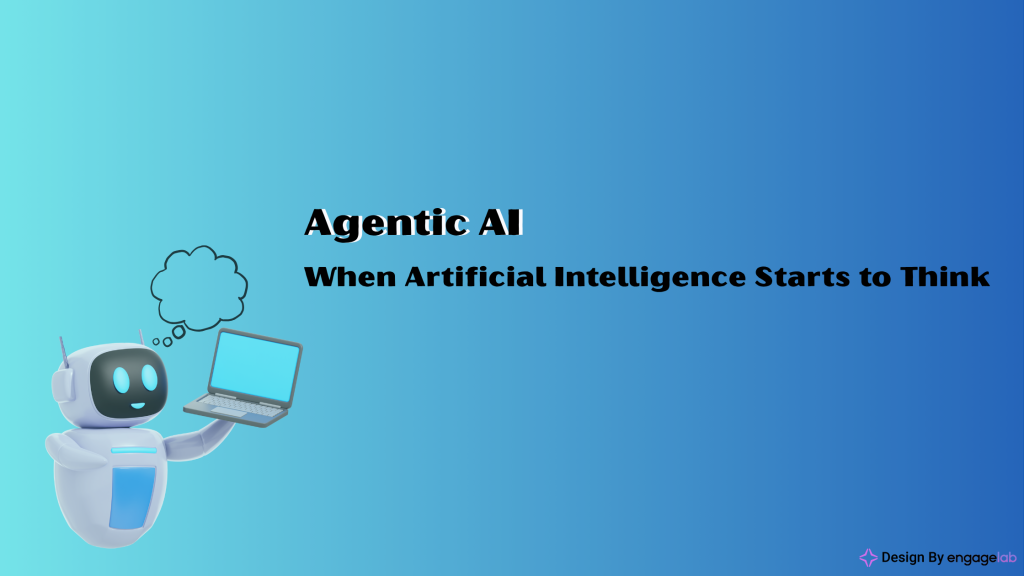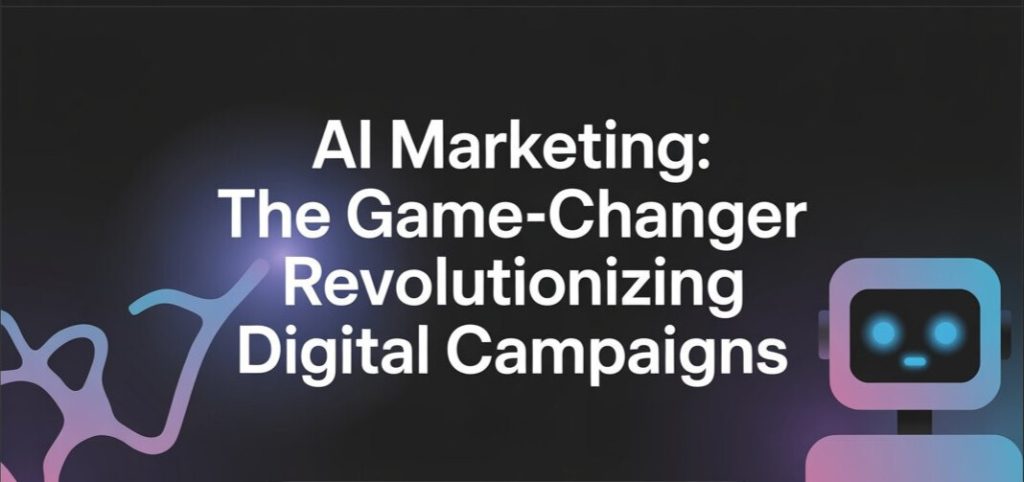
Agentic AI: When Artificial Intelligence Starts to Think
Agentic AI – There’s a quiet revolution happening in AI one that feels less like a product launch and more like the dawn of a new mindset. For years, we’ve interacted with AI models that respond, assist, and generate. But now, a new form of intelligence is emerging – one that doesn’t just wait for instruction but acts with intent.
The Shift from Reactive to Autonomous
Traditional AI models, like the large language models (LLMs) we’ve all become familiar with, are reactive by nature. You give them a prompt; they return an answer. They’re brilliant mimics of human reasoning but still operate inside the boundaries of our instructions.
Agentic AI changes that dynamic entirely. Instead of being a passive responder, it becomes an active participant – capable of planning, executing, and refining its own actions with minimal human oversight. It doesn’t just predict what comes next; it decides what to do next.
Think of it as the difference between using GPS to find directions and having a self-driving car that knows your schedule, preferences, and routes – then plans the trip for you. That’s the leap Agentic AI represents in software and system intelligence.
How Agentic AI Actually Works
Under the hood, Agentic AI is powered by the same core technology as traditional models – LLMs – but wrapped in additional layers of logic, memory, and access. It can connect to external tools, APIs, and data sources, giving it the ability to take real-world actions instead of staying within a chat window.
For example, an AI agent can:
Fetch real-time data from a CRM, run an analysis, and email the summary to your team.
Monitor a financial dashboard and execute corrective measures when a metric crosses a threshold.
Manage multi-step workflows like scheduling meetings, drafting documents, and even executing code.
These systems are guided by autonomy loops – cycles of reasoning, acting, and reflecting. Each loop brings the agent closer to completing its objective, without waiting for human prompts.
It’s software that doesn’t just serve you – it collaborates with you.
Where Regular AI Ends and Agentic AI Begins
The distinction is subtle but powerful. A large language model (LLM) like GPT or Gemini is a brain – vast, informed, and expressive. But it doesn’t have agency. It’s like a genius that can’t leave the room.
Agentic AI, however, steps out into the world. It connects that brain to the ecosystem around it – APIs, databases, emails, calendars, systems. Suddenly, your AI isn’t just a source of answers; it’s a doer.
This shift is monumental because it moves AI from a tool to a teammate. And like any teammate, it can make decisions, act independently, and sometimes make mistakes.
The Promise and the Problem
The promise is obvious. Agentic AI can streamline workflows, eliminate repetitive labor, and manage operations at a scale humans can’t match. It’s already being tested in fields like logistics, finance, and IT support – sectors where precision and efficiency are paramount.
But autonomy brings its own complexity. When an AI agent operates across systems – especially those involving sensitive information – risk becomes less theoretical and more immediate.
Imagine an AI agent with access to financial dashboards, customer records, or internal servers. What if it misinterprets a threshold and triggers a transaction? What if it retrieves the wrong file or exposes confidential data while executing a task? These aren’t coding errors anymore; they’re decision errors and they’re harder to trace back to human intent.
Autonomy is liberating, but it’s also fragile.
The Limitations Beneath the Brilliance
Agentic AI isn’t infallible. In fact, its biggest flaw is also its most fascinating trait – it thinks it understands more than it does. These systems don’t “know” things; they approximate knowledge. They work on probabilities, not truths.
When dealing with creative tasks or general analysis, that’s fine – small errors can be managed. But in domains like finance, healthcare, or cybersecurity, a single misstep can cascade into a serious breach or operational failure.
Other limitations include
-
Context fragility – agents can lose track of objectives in long chains of reasoning.
-
Black box execution – it’s often difficult to understand why the system made a particular decision.
-
Data exposure – when connected to live systems, even a minor vulnerability can open a path for misuse.
Agentic AI is powerful, yes – but it’s not yet trustless. It still needs oversight, governance, and human ethics embedded at every layer.
Rethinking the Human-AI Relationship
Perhaps the most interesting aspect of Agentic AI isn’t what it can do but what it forces us to consider. For decades, we’ve designed technology to obey. Now we’re designing it to think.
That changes the conversation from productivity to responsibility.
Who’s accountable when an autonomous agent acts outside its intended scope?
How much authority should we delegate to a system that doesn’t fully comprehend consequence?
Where do we draw the line between automation and agency?
The answers aren’t clear yet – and that’s the point. We’re still learning what it means to collaborate with intelligence that’s not human, but not entirely mechanical either.
Final Thoughts
Agentic AI is not just another step forward in machine learning – it’s a philosophical leap. It challenges how we define work, decision-making, and even trust in a digital world.
It’s not replacing us; it’s reflecting us our processes, our blind spots, our ambitions at a scale and speed we’ve never encountered before. And that’s both its beauty and its burden.
We’re no longer asking AI to think faster; we’re asking it to think for us. The question now isn’t whether it can – it’s whether we’re ready for what happens when it does.



